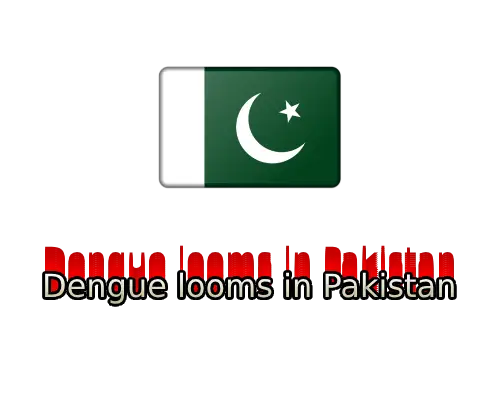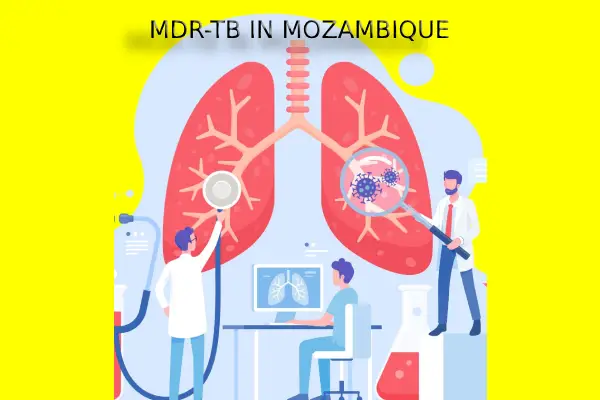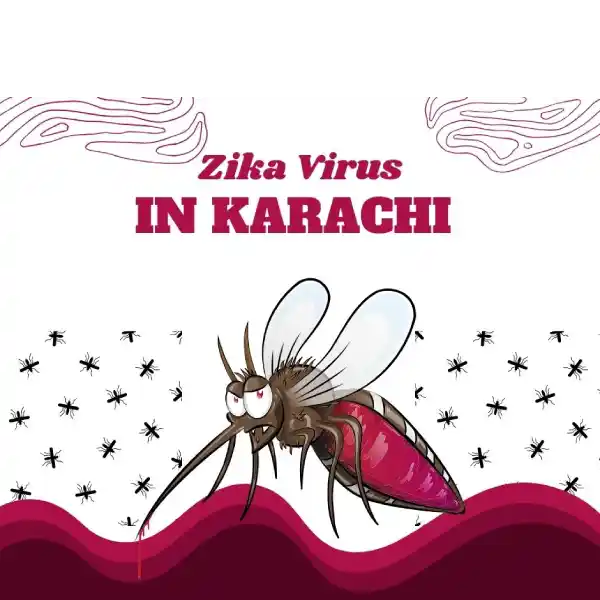Dengue Woes in Pakistan: It Just Won’t Quit

Dengue virus, a relentless viral foe transmitted through the unrelenting dance of mosquitoes, casts an enduring shadow over Pakistan.
It emerges cyclically, and the recent outbreak in Rawalpindi is yet another reminder of this recurring menace.
The Enigma of the virus
The fever, stemming from the crafty dengue virus, stealthily infiltrates human lives through the orchestrated bites of Aedes aegypti mosquitoes. Classified into four serotypes, DENV-1, DENV-2, DENV-3, and DENV-4, this viral menace can trigger a spectrum of symptoms, from mild discomfort to a severe and potentially life-threatening ordeal.
Is dengue curable?
Dengue Fever Curable: Dr. Zulfiqar
Assistant Professor Dr. Zulfiqar Ali Liaquat University of Medical and Health Sciences reassures the public about the curability of dengue fever. He emphasizes on preventive measures, symptoms, and treatment options. Mosquito control and prompt medical attention are crucial in managing the illness effectively.
Rawalpindi’s Endless Narrative
In the current scene, Rawalpindi stands center stage in a drama of this type of viral infection. An alarming 1,829 people have been ensnared by the mosquito web this season, with one unfortunate soul in critical condition. Yet, amidst this chaos, there’s a glimmer of hope – not a single death report, an eloquent testament to the healthcare measures in place and the unwavering resilience of the people.
Rawalpindi found another dengue case, making it five in total. Officials took action with 65 cases, closing 82 places, and giving fines. They checked over a million homes indoors, finding larvae in thousands. Outside, they checked hundreds of thousands of places, finding larvae in many. They’re working hard to stop dengue from spreading.
The Art of Dengue Warfare
Winning the battle against this deadly virus requires a tapestry of strategies :Shielding against mosquito virus is simple: keep utensils covered. Prevent stagnant water collection in open containers. Mosquitoes lay eggs in water, so covering utensils eliminates breeding grounds. It’s a small action with a big impact in safeguarding against the virus.
Government Symphony
The virus outbreak in Rawalpindi paints a bleak picture, with the root cause being a multifaceted failure in governance.Mismanagement has allowed the virus to thrive, as essential resources and funds fall short of requirements. Widespread unawareness compounds the issue, with the public often ill-equipped to protect themselves.
However, the most insidious culprit is corruption and ignorance within the department responsible for disease control. Ineffective and apathetic employees have failed to take timely action, contributing to the unchecked spread of the virus.
The result is an ongoing public health crisis that underscores the dire consequences of these systemic failures.
Rawalpindi’s government-run hospitals are the frontline warriors in treating itsvictims. Presently, 125 individuals are under their vigilant care, comprising 92 confirmed dengue patients. In suspense, the dengue serology reports of 33 individuals await their fates.
The Canvas of Public Awareness
Artful campaigns that paint a vivid picture of prevention are a cornerstone of the fight against infectious disease. The public is taught to shield themselves with mosquito nets, don protective armor in the form of clothing, and arm against attacks with mosquito repellents.
The Choreography of Mosquito Control
Controlling the whimsical mosquito population is an art form in itself. Fumigation and the meticulous elimination of stagnant water’s hidden breeding grounds form the strokes in this intricate dance. Community engagement plays a vital role in sustaining this effort.
The Road Ahead: A Masterpiece in Progress
Dengue, the perpetual puzzle, beckons a united front – an orchestra of healthcare institutions, government agencies, and the public in symphonic unison. Rawalpindi’s tableau is a vivid brushstroke highlighting the urgency of addressing dengue’s perennial reign.
The absence of fatalities is a gleaming stroke, yet the sheer volume of cases is an ominous cloud. In this collaborative masterpiece, vigilance, resources, and collective cooperation are the brush and palette needed to safeguard the public’s well-being.
Bottm Line
This fever persists as an artistic enigma in Pakistan, an unpredictable performance that continues to captivate and concern. The ongoing outbreak in Rawalpindi beckons for creative measures to quell its spread, protect public health, and forever silence this recurring symphony of suffering.
In the unending battle against the relentless dengue virus, a multi-pronged strategy is indispensable. It encompasses a robust collaboration between civil society and social awareness campaigns, as these agents of change foster public vigilance.
Concurrently, the state plays a pivotal role by ensuring the provision of mosquito control measures. The harmony of these endeavors, facilitated by a well-managed strategy, holds the promise of dengue’s ultimate containment.
Pakistan’s government must exhibit unwavering resolve through dedicated resources, infrastructure, and expert guidance. Through this collective endeavor, a united front will emerge, leading to the taming of the dengue threat and securing a healthier, safer future for all.







